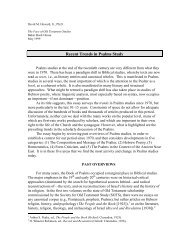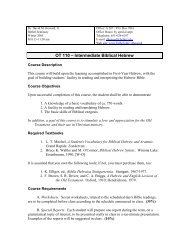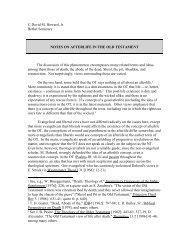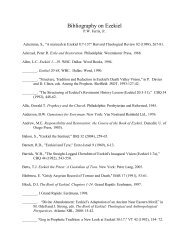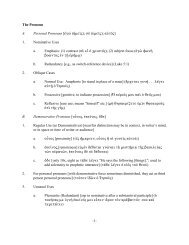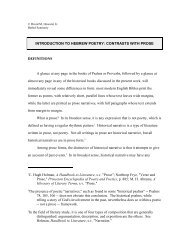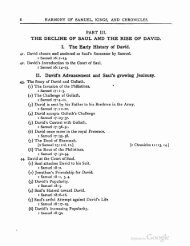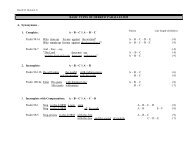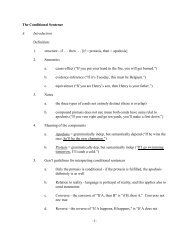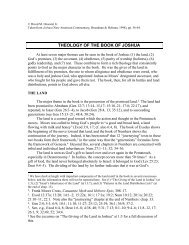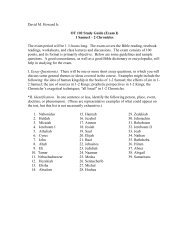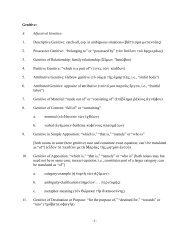Budget Constraints qStart to Build a Theory of Consumer Choice ...
Budget Constraints qStart to Build a Theory of Consumer Choice ...
Budget Constraints qStart to Build a Theory of Consumer Choice ...
You also want an ePaper? Increase the reach of your titles
YUMPU automatically turns print PDFs into web optimized ePapers that Google loves.
Microeconomics<br />
Dr. Dmitri M. Medvedovski<br />
The <strong>Consumer</strong>’s Problem<br />
●Attain the highest possible level <strong>of</strong> utility<br />
–Scale utility mountain<br />
●The available budget constitutes the constraint<br />
●Think <strong>of</strong> the budget as a fence on the mountain<br />
●Find the highest place on the fence<br />
The <strong>Budget</strong> Constraint<br />
●The consumer has a sum <strong>of</strong> money <strong>to</strong> spend each period, M<br />
This money is spread across many goods, X i<br />
●Thus the expenditure on the first good, X 1<br />
, is<br />
●And similarly for all other goods<br />
Graphical Construction <strong>of</strong> the <strong>Budget</strong> Constraint<br />
The <strong>Budget</strong> Line in Mathematical Terms<br />
●Imagine the consumer spends all income on good Y<br />
●The maximum amount <strong>of</strong> Y that can be purchased is M/(P Y<br />
)<br />
●If all income is spent on good X then the maximum quantity is M/(P X<br />
)<br />
●Join these two points <strong>to</strong> make a straight line<br />
●Any combination on the line exhausts the entire budget M<br />
The Slope <strong>of</strong> the <strong>Budget</strong> Constraint<br />
●The slope is the ratio <strong>of</strong> the two prices: derive: (M/Py)/(M/Px)<br />
●-P Y<br />
/P X<br />
The <strong>Consumer</strong> <strong>Choice</strong><br />
●Attain highest possible utility<br />
●Don’t violate the budget constraint<br />
●<br />
<strong>Budget</strong>: I = P 1 X 1 + P 2 X 2 , where X 1 and X 2 are goods.<br />
X 2<br />
50<br />
I<br />
P 2<br />
I<br />
P 1<br />
= X 1<br />
+ P 2<br />
P 1<br />
X 2<br />
40<br />
30<br />
20<br />
Slope = -1 = − P 2<br />
P 1<br />
I<br />
X 1<br />
= I P 1<br />
− P 2<br />
P 1<br />
X 2<br />
10<br />
10 20 30 40 50<br />
X 1<br />
P 1<br />
constant<br />
slope<br />
Page 4 out <strong>of</strong> 7 Lec. 5



